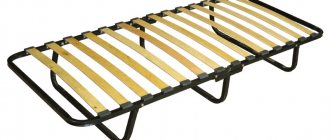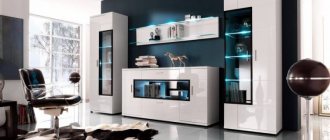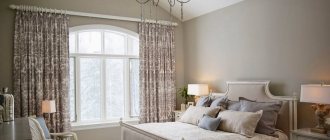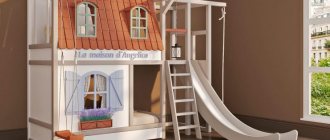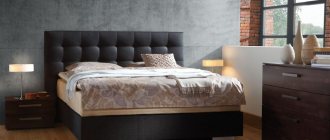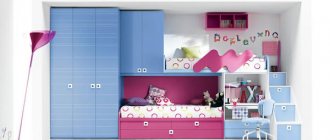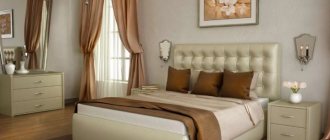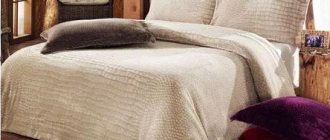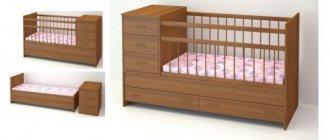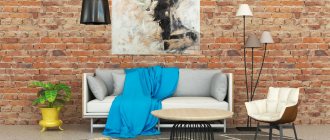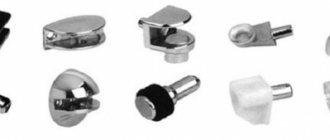Children's furniture today offers an unlimited variety of models and forms of manufacture, which allows you to turn a bedroom or part of a parent's room into a stylish and comfortable space. In the article we tell you how to choose a bed for a child: about the types and safety aspects of structures, rules for choosing a mattress, style decisions.
Types of cribs for children
Children's products differ from classic adult beds. The main reason is the age of the user, which imposes certain restrictions and features on the design of furniture. So, the range of children's beds is presented in the following types:
- Cradle A cozy little product for peace of mind and a sense of security for the baby. There is a mechanism for rocking, and in more advanced ones there are audio systems for rocking to comfortable soothing music. Despite all the advantages, such beds are short-lived: we are not talking about possible breakdowns, but the need to buy a new one due to the fact that the baby grows up quickly. The average shelf life is 7-8 months.
- Bed on skids The best option for 2-3 years of baby growth. The peculiarity of the model is that its legs are curved runners that are responsible for rocking the crib. In general, such products are durable and quite compact.
- Playpen bed A good option for small apartments. This product can be placed in the parent's bedroom. The crib combines the functions of a sleeping and play area. Thanks to the secure legs, there is no risk of tipping over.
- Pendulum beds More expensive than products on runners. Design features include the presence of a pendulum, which allows you to start the swinging process with just one light touch of your hand and lock the mechanism if necessary. The advantage of beds is the provided storage space in some models, as well as the ability to be used up to a 3-year-old child.
- Beds with drawers They can be on wheels or stationary, equipped with storage systems. This option is very convenient, because it allows you to have all the necessary accessories at hand, and, therefore, to use the space of the room rationally.
- Transformable beds An option for small square meters, combining several types of useful surfaces at once: a chest of drawers, a changing table, a cradle. Since such products are all-in-one, they are cheaper than each product separately. Also, as the child grows, transformers can be removed from unnecessary elements and turned into a bed for a schoolchild with a service life of up to 10 years of age. In addition, and depending on the age of the baby, there are themed cribs in the shape of animals, vehicles or cartoon characters; classic with protective extensions, lifting or stationary sides; lofts with sleeping space above and closed/open shelves below; two-tier models for two kids in a family and others.
Types and features of crib models for newborns
The types of beds for babies presented on the modern furniture market are striking in their diversity. The model range consists of traditional products, beds with extended functionality and transformable beds.
Classic bed for newborns
A classic crib for newborns is a rectangular sleeping place, fenced on four sides with rods or mesh. As a rule, standard furniture models have the function of adjusting the height of the sides and bottom. A classic crib can be used from the first days of a baby’s life until 3-5 years.
Bassinet for babies
The cradle bed can be used from the first days of a little person’s life to 6-8 months of age. When falling asleep in a confined space, the child feels completely safe. The cradle-bed is a traditional cradle mounted on a special stand or stationary belts.
The advantages of a cradle bed include:
- motion sickness system;
- compact dimensions;
- mobility;
- light weight.
Children's rocking bed
Externally, the rocking bed is practically no different from the standard model. A special feature of the bed is the presence of a pendulum mechanism, which creates rocking movements when the legs are in a stationary position. The pendulum is a special suspension on belts. If desired, the action of the pendulum mechanism can be blocked.
Several types of pendulums are used in the design of beds for babies:
- transverse;
- longitudinal;
- combined (perform both longitudinal and transverse vibrations).
Transformable bed for newborns
A transforming bed can be used as a sleeping place from the first days of life until adolescence. The design of the bedding, in addition to the bed, includes other components, by removing and installing which you can modify the functional purpose, increasing the service life of the furniture.
There are two main types of convertible cribs for babies:
- transformable bed for growth;
- round transformable bed.
The transformable bed for growth is equipped with sliding mechanisms that allow you to increase the size of the bed. A round bed can be transformed into a spacious playpen, a cozy sofa, a furniture set of a table and 2 chairs, and so on.
Add-on cot for babies
The baby cot is characterized by ergonomic shapes and small dimensions. The bed is placed next to the parent's sleeping area with the open side, the child feels safe next to the mother, and each of them has a separate sleeping area.
Bed safety
Before choosing a crib for your children, you need to take into account all the safety nuances. The product should not only fit into the overall design of the room, but also be comfortable and non-traumatic. Pay attention to the elements:
- Legs. Wheels are convenient for the mobility of the product, but for uneven floors it is better to take into account the presence of wheel/runner locks.
- Bottom. Most beds are equipped with a slatted bottom, which is ventilated and therefore remains dry during use. A good option is an adjustable bottom, which in the first months of the baby’s life is raised to provide access to it, and then lowered to prevent it from falling out.
- Sides. The bars of the sides should have no jagged edges or sharp edges, and the distance between them should be no more than 6-8 cm. It would be correct to consider the option of purchasing a crib with removable walls, when the product, if necessary, can be attached to the parent’s bed.
- Material. You can't skimp on it. It is best to choose models made of natural wood, for example, strong and durable beech with a service life of 5-6 years. If the bed is made of lumber (chipboard, MDF), check the certificates for the raw materials - the material should not contain unsafe formaldehydes.
- Mattress. Moderate rigidity of the product is an important criterion for a baby. For older children, you can choose products with low rigidity and small thickness.
Crib sizes
Sometimes a child's bed needs to be carefully placed on very modest square meters. At the same time, it should be as rational as possible in terms of the ratio of the baby’s growth and the possibility of frequency of furniture renewal.
The standard dimensions of a children's bed are 120*60 cm. The length can vary from 59 cm (for cradles) to 180 cm. Width - from 42 cm to 140 cm.
If you choose non-standard dimensions of the product, remember that you will have to order the mattress.
Standard size cribs
There are at least seven types of children's beds on the market. Each is intended for a specific age.
Cradle
Most often found in two sizes: 75*45 cm and 80*40 cm. The depth of the sleeping place is 24-28 cm.
The cradle is the smallest crib in size.
This small crib for a newborn is rectangular or round in shape. Most models have curved legs, thanks to which the cradle can be rocked, helping the baby fall asleep faster. Often the package includes wheels to easily move the crib around the apartment.
The height of a baby cot is usually no higher than 95 cm
Hanging cribs are placed next to the parents' ones to make it convenient to rock the baby
There are also electric swing cradles on sale that independently rock the baby and give moms and dads a little rest. Another option for cradles is hanging. These cribs are borrowed from the past and resemble cradles that used to be hung from the ceiling.
What else you need to know about cradles
- Due to the low sides, they are only suitable for children who cannot sit. Once the baby begins to sit up (around 5-6 months), the height of the crib becomes unsafe.
- There are weight restrictions. You must read the specifications carefully. Some models are designed for babies up to 7 kg.
It's worth knowing . Children grow at different rates. Someone already at two months can be the size of a four-month-old baby. Therefore, it is better to take the cradle as large as possible so that it lasts longer.
Classic children's bed
The standard size is 120*60 cm. It often has two bed heights: 30 and 50 cm.
The most popular crib for children from 0 to 3 years old
This is a regular rectangular bed with a high slatted railing. Children sleep in it from birth to three years. While the child is small, the bed is raised - this makes it more convenient to lay the baby down. When the child begins to sit, the bed is lowered for safety.
Design Features
In addition to the sleeping place itself, the bed can be equipped with various additional practical elements.
- Drawers and shelves. Located mainly at the bottom of the crib, they will allow you to place all the accessories children need: bedding, diapers, linen.
- Silicone pads. They are mainly located on the top rails and are needed if the child begins to teethe. Such products are safe and environmentally friendly, protecting both teeth and furniture.
- Baby changing table. Sometimes it is built into the crib/chest of drawers and makes changing the baby much easier.
- Built-in chest of drawers. A significant advantage: in such a chest of drawers you can store bottles, pacifiers, powders, etc.
- Backlight. Convenient when you need to rock/change your baby at night.
Rules for choosing a mattress
When choosing a mattress for a crib, in addition to the size (must fit the dimensions of the bed), it is important to take into account their hardness and filling.
Rigidity. From birth to 2-3 years, the baby needs a hard or medium-hard mattress with an elastic surface for proper muscle/spine formation; For children from 3 years old, moderate and medium-hard models of orthopedic mattresses are suitable.
An option is a double-sided mattress. One side is hard, necessary in the first 6-8 months, the second is softer, appropriate after 8 months.
Filling. The rigidity, elasticity, and safety indicators of the product depend on it. The general rule is that the fillers of children's mattresses must be free of harmful fumes and retain their user properties throughout their entire service life. The most popular filling materials:
- Coconut fiber correctly distributes the load, ensures good sleep, proper growth of the skeletal system and the full development of the child’s body. Features include elasticity, good air permeability, maintaining the correct microclimate, hypoallergenicity, and safety. Coconut coir filling does not mean that the mattress is made only from it. A good coconut product has a well-thought-out design and a mix of fillers that meet the intended purpose of the mattress.
- Latex is a high quality natural material made from the Hevea tree. Thanks to its cellular structure, it springs back, but immediately restores its shape. It is well ventilated, hypoallergenic, antibacterial, does not absorb moisture and does not collect dust, does not rot, and has good orthopedic characteristics.
- Polyurethane foam, or artificial latex, is inferior in characteristics to natural latex, but is cheaper, hypoallergenic, fireproof, thanks to its cellular structure, it springs well and returns to its original shape, breathes well, and also provides the necessary levels of softness/hardness, which is useful for the developing children's spine.
How to choose a crib for a newborn
When choosing furniture for a newborn, consider the area of the room where it will be located, the presence of ergonomic additions, as well as financial capabilities (whether you can change the product to another in a couple of months).
- If we consider classic models on runners, with a pendulum mechanism, on legs/wheels, then this is an option for long-term operation - up to 3-4 years. In addition, in this category there are products with a wide variety of prices, shapes, designs and features.
- For a rented apartment, when you often have to move, a playpen that does not take up much space and is mobile due to the presence of wheels is suitable.
Additional equipment for cots for newborns
The cribs can be equipped with other pieces of furniture necessary to care for the baby. The furniture set may include:
- changing table;
- linen boxes;
- dresser;
- shelves;
- cabinet.
Additional accessories include a protective net or canopy. The canopy protects the baby from sunlight and insects.
A useful functional addition to a bed for newborns is the ability to adjust the level of the bottom and the auto-wall (lowering side wall of the crib).
Tips for choosing a bed for a child: to summarize
So, briefly and having collected all the nuances, to choose a bed, evaluate:
- Safety. Make sure that the bed has no sharp corners, that the fittings are strong and reliable, that the manufacturing company or seller has the necessary certificates, and that the design has protective sides.
- Hypoallergenic. The entire design and each of its details should not raise any questions regarding the possible occurrence of allergies. Fillers are natural, varnishes/paints are non-toxic.
- Materials. Solid wood is best, then lumber. Due to the cold and inconvenience, metal is not recommended for children's products. If it is lumber, then there must be certificates for the raw materials.
- Strength and stability. The main condition is sufficient weight to prevent overturning.
- Brand. Manufacturers with a good reputation monitor the bed manufacturing process at every stage, and therefore the entire design, quality of fasteners, and appearance always meet the buyer’s expectations. Read product reviews before purchasing.
Children deserve the best, and therefore the right choice of a crib will help lay the foundation for a comfortable life, the correct formation of the spine and a peaceful rest for the baby.
What material is better for a children's bed?
These days, bed frames are made from a variety of materials, from MDF to solid wood, modern metal and even plastic. Each material offers something different, from greater durability to unique designs. But kids need furniture that will stand the test of time. Parts must be easy to clean and withstand heavy use. Of course, the best option would be natural wood. This is the most recommended material for making children's furniture. Here are its main advantages.
- Natural wood - strength, durability and environmental friendliness.
Important!
We would like to draw your attention to the fact that all children's furniture is subject to mandatory certification, is made from safe materials and meets all quality standards.
